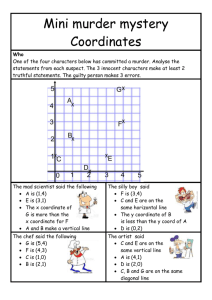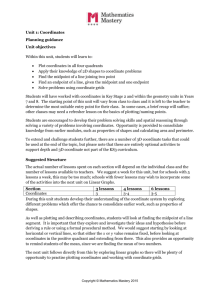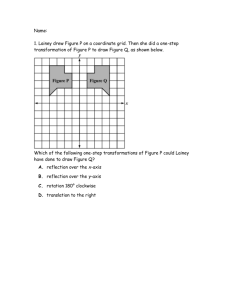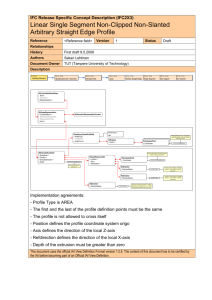Doc 3.1(1)
advertisement
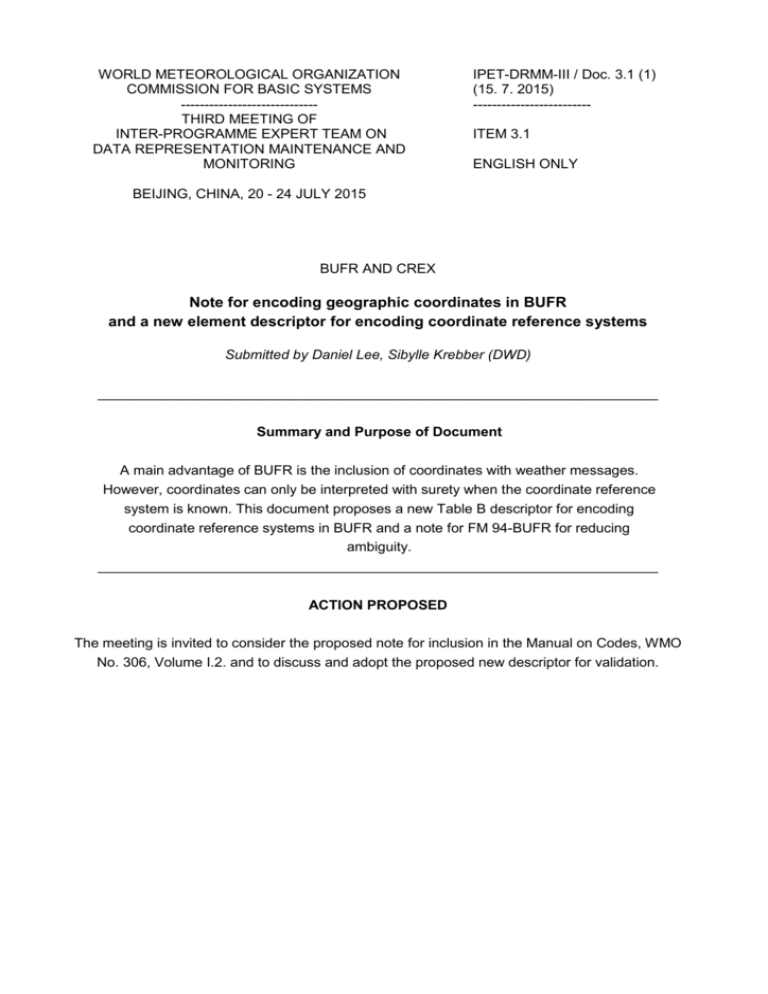
WORLD METEOROLOGICAL ORGANIZATION COMMISSION FOR BASIC SYSTEMS ----------------------------THIRD MEETING OF INTER-PROGRAMME EXPERT TEAM ON DATA REPRESENTATION MAINTENANCE AND MONITORING IPET-DRMM-III / Doc. 3.1 (1) (15. 7. 2015) ------------------------ITEM 3.1 ENGLISH ONLY BEIJING, CHINA, 20 - 24 JULY 2015 BUFR AND CREX Note for encoding geographic coordinates in BUFR and a new element descriptor for encoding coordinate reference systems Submitted by Daniel Lee, Sibylle Krebber (DWD) _______________________________________________________________________ Summary and Purpose of Document A main advantage of BUFR is the inclusion of coordinates with weather messages. However, coordinates can only be interpreted with surety when the coordinate reference system is known. This document proposes a new Table B descriptor for encoding coordinate reference systems in BUFR and a note for FM 94-BUFR for reducing ambiguity. _______________________________________________________________________ ACTION PROPOSED The meeting is invited to consider the proposed note for inclusion in the Manual on Codes, WMO No. 306, Volume I.2. and to discuss and adopt the proposed new descriptor for validation. DISCUSSIONS BUFR allows users to encode coordinates describing where observations were made. However, there is currently no way of encoding the coordinate system in which these coordinates should be interpreted. This allows messages to be encoded with latitude/longitude coordinates which may or may not be understood as the encoding user intended, because the reference coordinate system, and in particular its prime meridian, are left to the user's interpretation. Typically, latitude/longitude coordinate systems use the equator, defined by the obliquity of the ecliptic, as the latitudinal origin, north and east directions defined by the earth's rotational axis and the generally accepted IERS Reference Meridian, which is close to, but not identical with, the prime meridian at Greenwich which was used until earth-based surveying was largely superseded by satellite-based cartography. This is, however, neither guaranteed nor is it always the case. Historically, easting coordinates based on differing easting origins have led to confusion in differing circumstances. Although the latitudinal origin is easily defined based on the earth's rotational characteristics, the longitudinal origin is a matter of arbitrary definition, creating the need for the definition and maintenance by an external authority. Because such external authorities are not referenced in BUFR tables, the coordinates are ambiguous. Even if it is assumed that the prime meridian at Greenwich is used, this meridian is defined in several coordinate systems with differences of more than 100 meters at most latitudes. In addition to these traditional uncertainties that occur when working with coordinates determined from the earth's surface, satellite data sometimes use exotic coordinate systems which cannot be properly interpreted using traditional, geostationary coordinate systems. Normally it is a fairly safe assumption that latitude/longitude coordinates should be interpreted using the WGS84 geodetic system, in which the longitudinal origin is clearly defined. This is the case when the data is encoded according to the specifications in the CIMO Guide. However, tragic experience has shown that not all stations report in a fully CIMO-compliant manner. Without absolute surety that they do so and without a specification of the coordinate reference system, any coordinates are, in truth, ambiguous, even if the interpretation is often serendipitously correct. The remaining ambiguity should be reduced in order to ensure a consistent interpretation of encoded coordinates. PROPOSAL The following note is proposed for FM 94-BUFR: (10) Coordinates can only be unambiguously interpreted if the coordinate reference system in which they are embedded is known. It is normally safe to assume that coordinates are to be interpreted with WGS84 geodetic system. Add new BUFR Table B descriptors and Code table: Class 01 – BUFR/CREX Identification TABLE REFERENCE BUFR F X Y 0 01 150 UNIT SCALE REFERENCE VALUE DATA WIDTH (Bits) UNIT SCALE DATA WIDTH (Char) Code table 0 0 16 m 0 5 ELEMENT NAME Coordinate reference system CREX Code table: 0 01 150 Coordinate reference system Code figure 0 1 2 3 4 - 65534 65535 WGS84, as used by ICAO since 1998 ETRS89, as defined by EPSG::4258 NAD83, as defined by EPSG::4269 DHDN, as defined by EPSG::4314 Reserved Missing value Note: EPSG is a dataset of coordinate system and coordinate system transformations, originally produced and maintained by the European Petroleum Survey Group. Now it is maintained by the Geodesy Subcommittee of the International Association of Oil and Gas Producers Geomatics Committee.


